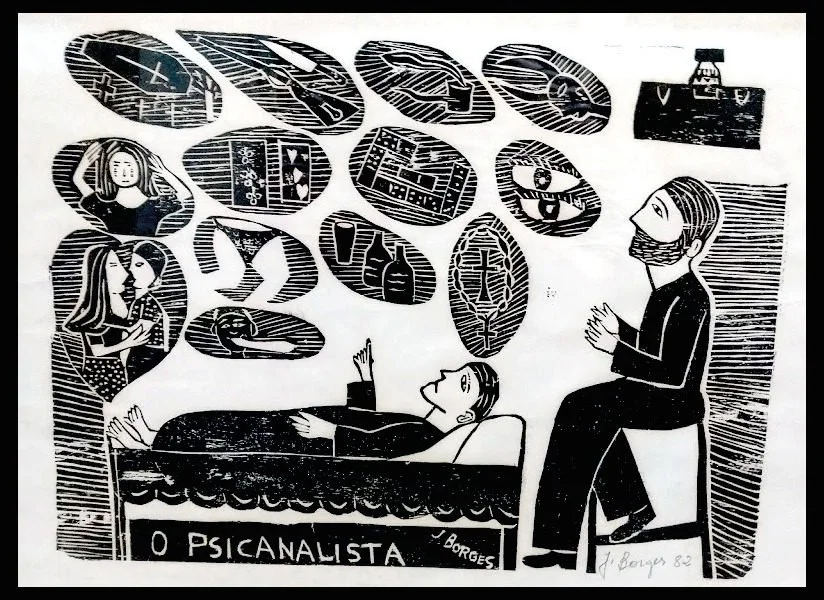Techniques, Application, & Ethics
Therapeutic skills build rapport, establish and maintain a collaborative therapeutic alliance, and implement interventions that can promote change. Holding true to my own artist identity and ethics lends an ability to help a client consider making art as part of therapy. My skills in active listening, creating a therapeutic alliance, emotional attunement, boundary setting, and emotional regulation all create the container of therapy.
-

Art Therapy Directives
Directives are where clients do the hard work. They can establish a safe place to return to during challenging work. They can let a client investigate what they want to work on, or they can can alternatively bring up unconscious needs during session.
A directive I have used with most clients is this “Inside/Outside” drawing. Usually, a client would draw what is currently happening in their outer world and then draw everything inside their inner world. This could be the first time a client has differentiated between thoughts and reality, or it can reinforce how our thoughts truly impact our reality.
Continuing to develop art directives and to more skillfully employ existing art directives to help clients better understand their inner world.
-

Somatic Therapy with Addiction
According to Levine and others, addiction is connected to trauma felt in the body, and somatic therapy works with the body. The three main parts of this relationship between jiu-jitsu and addiction are this somatic experience, providing physical needs, and providing mental needs.
-

Case Conceptualization
Using three theoretical models of therapy—psychoanalysis, existential therapy, and feminist therapy—I will explore how each model would frame the issue and how a therapist from each model would intervene.
-

Genogram and Art Therapy
A genogram illustrates not only the health history of one’s family but also the relationship of family members across generations. It can reveal generational wounds that have affected the relationship of family members. Hereditary patterns and psychological factors both play a role in current family relationships and can identified through a genogram. Response art to the intense work of creating a genogram can begin deeper processing that needs to happen.